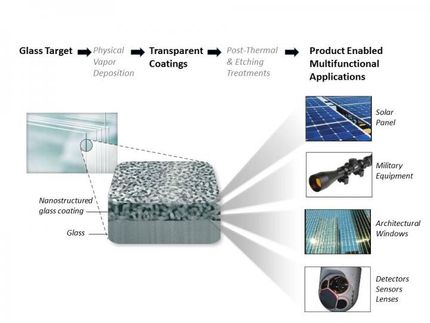Rapid etching X-rayed: Physicists unveil processes during fast chemical dissolution
A breakthrough in the study of chemical reactions during etching and coating of materials was achieved by a research group headed by Kiel physicist, Professor Olaf Magnussen. The team from the Christian-Albrechts-Universität zu Kiel (CAU), Germany, in collaboration with staff from the European synchrotron radiation Facility (ESRF) in Grenoble, France, have uncovered for the first time just what happens in manufacturing processes, used for the formation of metal contacts thinner than a human hair in modern consumer electronics, such as flat-screen television.
For their research the scientists used the intense X-ray radiation of the experimental station ID32, one of the ESRF's instruments. The X-ray beam was directed onto a gold surface while it dissolved in diluted hydrochloric acid. Because the reflected X-rays are sensitive to tiny changes in the atomic arrangement at the material's surface, the metal removal during the reaction can be precisely measured. "Such studies were only possible during very slow changes of the material so far", Olaf Magnussen explains. To gain insight into the fast reactions going on in industrially employed processes the speed of the measurements had to be increased more than a hundredfold. Even during very fast etching the removal of the metal proceeded very uniformly. "The material dissolves quasi atomic layer by atomic layer, without formation of deeper holes", Magnussen remarks. In a similar way, the team could follow the attachment of atoms during the chemical coating of materials.
Among the diverse industrial applications of chemical etching and coating are high-tech manufacturing processes, for example in the production of electronic devices. These require precisely controlled reactions. In order to optimize such etching and coating processes they are intensely studied worldwide. Until now it was only possible to analyse the finished product. With the method developed by the scientists, changes within a few thousandth seconds may be detected so that the reactions at the material's surface can be tracked on the atomic scale under realistic conditions.
Original publication
F. Golks, K. Krug, Y. Gründer, J. Zegenhagen, J. Stettner, O. Magnussen: "High-speed in situ surface X-ray diffraction studies of the electrochemical dissolution of Au(001)."; Journal of the American Chemical Society 2010, 133, 3772.
Most read news
Original publication
F. Golks, K. Krug, Y. Gründer, J. Zegenhagen, J. Stettner, O. Magnussen: "High-speed in situ surface X-ray diffraction studies of the electrochemical dissolution of Au(001)."; Journal of the American Chemical Society 2010, 133, 3772.
Organizations
Other news from the department science
These products might interest you

Dursan by SilcoTek
Innovative coating revolutionizes LC analysis
Stainless steel components with the performance of PEEK - inert, robust and cost-effective

OCA 200 by DataPhysics
Using contact angle meter to comprehensively characterise wetting behaviour, solids, and liquids
With its intuitive software and as a modular system, the OCA 200 answers to all customers’ needs

Tailor-made products for specific applications by IPC Process Center
Granulates and pellets - we develop and manufacture the perfect solution for you
Agglomeration of powders, pelletising of powders and fluids, coating with melts and polymers

Get the chemical industry in your inbox
By submitting this form you agree that LUMITOS AG will send you the newsletter(s) selected above by email. Your data will not be passed on to third parties. Your data will be stored and processed in accordance with our data protection regulations. LUMITOS may contact you by email for the purpose of advertising or market and opinion surveys. You can revoke your consent at any time without giving reasons to LUMITOS AG, Ernst-Augustin-Str. 2, 12489 Berlin, Germany or by e-mail at revoke@lumitos.com with effect for the future. In addition, each email contains a link to unsubscribe from the corresponding newsletter.




























































